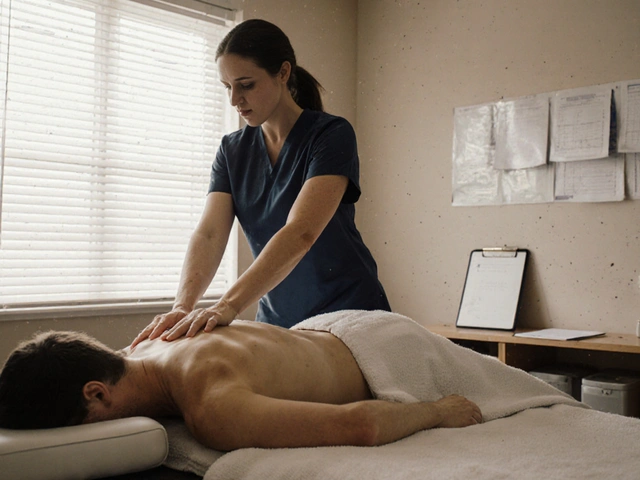Myofascial Release Therapy: Real Relief for Stubborn Pain
Tired of tight spots that never go away? Myofascial release therapy (MFR) targets the fascia — the connective tissue that wraps muscles — to ease stuck tension and restore movement. Many people find real, practical relief without drugs, and you can try simple steps at home or get hands-on work from a therapist.
How it works and what to expect
MFR uses steady, gentle pressure and slow stretches to loosen adhesions in fascia. Sessions usually last 30–60 minutes. Clinically, MFR has shown short-term drops in pain and gains in range of motion, especially for neck, back, and shoulder issues. Therapists look for tight bands and apply pressure until the tissue eases — that release often feels different from a quick massage: slower and deeper.
Expect soreness that feels like a good stretch, not sharp pain. Real relief can appear during a session or build over several visits. For chronic issues, many people book weekly sessions for 4–6 weeks, then move to maintenance every few weeks. Insurance and availability vary, so ask about session length and therapist training before you book.
Simple self-release moves and safety tips
You can start basic self-myofascial release safely at home. Use a foam roller for calves, quads, and upper back. A lacrosse or tennis ball works well for glutes and shoulder blades. Apply steady pressure to a tight spot and hold for 60–120 seconds, breathing slowly until the tissue softens or the discomfort eases.
Try this quick routine: roll calves 1–2 minutes each, foam-roll quads 1–2 minutes, and spend 1–2 minutes with a ball on each glute. That’s enough to reduce tightness without overdoing it. Drink water after sessions — fascia responds better when you’re hydrated.
Warnings: stop if you feel sharp, shooting pain, numbness, or tingling. Don’t use MFR on open wounds, deep vein thrombosis, active infection, or over cancerous tissue without a doctor’s OK. Pregnant people should check with a provider before deeper work. If a self-technique makes pain worse after 24 hours, pause and consult a pro.
How does MFR compare to other therapies? It pairs well with massage, neuromuscular therapy, and movement work like gentle yoga or targeted strengthening. While massage often uses strokes and kneading, MFR focuses on sustained pressure and slow release — together they can speed recovery and improve mobility.
Questions to ask a therapist: What training do you have in MFR? How long is a typical session? How often should I come? What should I feel during release? Honest answers help you pick a safe, effective practitioner.
Want a quick win? Start with short, regular self-release sessions and track mobility or pain on a simple scale before and after one week. If tight spots persist or pain limits daily life, book a session with a trained myofascial therapist. Small, steady work often leads to big improvements in movement and comfort.

Embracing the Healing Powers of Myofascial Release Therapy
Hi there, it's me again with an enlightening piece on the life-changing benefits of Myofascial Release Therapy. Curious to know what it is? It's a holistic health approach that brings soothing relief to those nagging body pains. Writing from my firsthand experience, let me share how it has enhanced pain management in such an unbelievable way. Come immerse yourself in this journey of discovering the healing powers of Myofascial Release Therapy, it might just be the relief you've been searching for.

Rediscover Health and Wellness with Medical Massage
Nov, 16 2025

Harnessing Aromatherapy for Better Emotional Health
May, 23 2024


